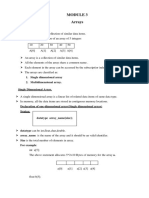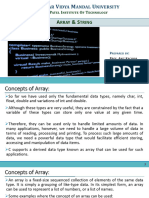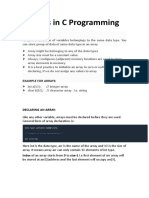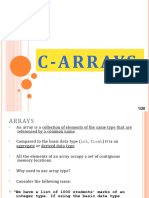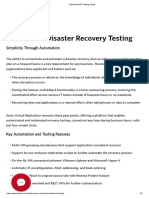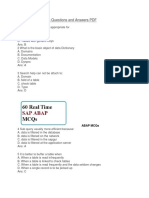0% found this document useful (0 votes)
5 views51 pagesArrays and Strings
This document provides an overview of arrays and strings in C programming, covering topics such as one-dimensional and multi-dimensional arrays, their declaration, initialization, and operations. It explains the concepts of scalar and aggregate data types, as well as string manipulation techniques. Additionally, it discusses the internal representation of arrays, variable-length arrays introduced in C99, and practical applications like sorting and searching within arrays.
Uploaded by
bharathkumar16114Copyright
© © All Rights Reserved
We take content rights seriously. If you suspect this is your content, claim it here.
Available Formats
Download as PDF, TXT or read online on Scribd
0% found this document useful (0 votes)
5 views51 pagesArrays and Strings
This document provides an overview of arrays and strings in C programming, covering topics such as one-dimensional and multi-dimensional arrays, their declaration, initialization, and operations. It explains the concepts of scalar and aggregate data types, as well as string manipulation techniques. Additionally, it discusses the internal representation of arrays, variable-length arrays introduced in C99, and practical applications like sorting and searching within arrays.
Uploaded by
bharathkumar16114Copyright
© © All Rights Reserved
We take content rights seriously. If you suspect this is your content, claim it here.
Available Formats
Download as PDF, TXT or read online on Scribd
/ 51













